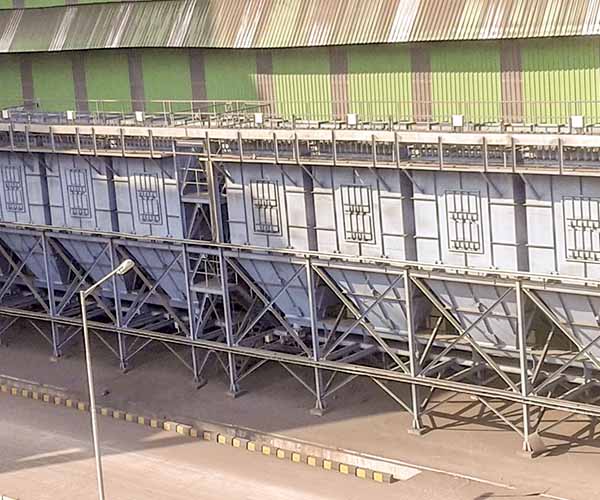- Home
- Company
- Industries
- Pharmaceutical Industries
- Food and Chemical Industries
- Agro industry
- Cement Industries
- Foundry Industry
- Petrochemical Industry
- Detergent Industry Insights: Sparking Innovation
- Steel & Non-Ferrous Industries
- Distillary & Brewery Industries
- Biscuit and Confectionary
- Fertilizer Industry
- Polymer Industries
- Systems
- Products
- Life At Rajdeep
- Contact Us
Air pollution control system

Techniques of Air Pollution Control
The presence of particular particles or gases in the air in amounts and for long enough periods to be harmful or have unintended effects is what defines air pollution control system. Most air contaminants originate from processes that include combustion or reduction.
Every year, the number of possible sources of pollution rises due to the fast increases in population growth, urbanization, industry, and increased prosperity.
Air pollutants come in an extensive variety of forms, each suffering particular chemical and physical characteristics as well as diverse sources. Pollens, lead compounds, asbestos and cement dust, sulfur dioxide, nitrogen oxides, carbon monoxide, hydrocarbons, chlorofluorocarbons (CFCs), dust, soot, ash, and radioactive substances are examples of common pollutants.
Reducing the emissions of these harmful gases and particles, which have an impact on the environment and public health, is accomplished by using techniques for regulating air pollution control system.
For the proper control solutions to be implemented in any given circumstance, a detailed understanding of the pollutants and their sources is essential.
Both the introduction of novel procedures and greater utilization of currently available control measures are necessary to effectively combat pollution. The kinds of pollutants involved as well as engineering, economic, and environmental factors all have a role in the selection of control solutions.
Latest techniques of air pollution control system are:
- Combustion – This technique is employed for organic gases or vapors. Here, organic air pollutants undergo ‘flame or catalytic combustion’, transforming them into less harmful products like carbon dioxide and water.
- Absorption – In this method, air laden with gaseous pollutants is directed through a scrubber containing a suitable liquid absorbent, which captures the harmful gases from the air.
- Adsorption – This approach involves passing polluted air through porous solid adsorbents housed in appropriate containers. The gaseous pollutants adhere to the surface of the porous solid, allowing cleaned air to flow through.
- Gravity – Particulates are removed by settling under the force of gravity.
- The rapid change in airflow direction – This technique separates particles due to their greater momentum.
Fabric Filters – Polluted air is passed through a porous medium made from woven or felted fabrics. Particulate matter is trapped and collected in these filters, while gases pass through. This method of air pollution control system is known as ‘bag filtration.
Wet Scrubbers – These devices capture substances like SO2, NH3, and metal fumes by channeling the fumes through water.
Electrostatic Precipitators – Polluted air with particulate pollutants is treated in an electrostatic precipitator where particles are charged electrically and then collected on electrodes.
Rajdeep Group offers a spectrum of engineering solutions characterized by sustainability and environmental friendliness. Rajdeep ranks among the top five manufacturers of industrial pollution control equipment in India, delivering inventive and sustainable resolutions to combat air pollution control system challenges. The company provides comprehensive expertise in various environmental protection domains, encompassing products and systems for air pollution control system, along with specialized services catering to gaseous and particulate emissions management.
Rajdeep emphasizes resource recovery, particularly beneficial for process-focused industries, and presents a range of tailored products for air pollution control.
- Rajdeep Group specializes in ash control post-combustion in boilers. The residue generated after burning fossil fuels or biomass like rice husk, wood chips, bagasse, spent wash, palm fiber, EFB, coal, anthracite, and lignite within a boiler is termed Suspended Particulate Matter (SPM). This ash forms various sizes of particulates emitted from the stack or chimney after the boiler operation. To manage this SPM (ash), various suitable air pollution control devices are employed, including Electrostatic Precipitator (ESP), Pulse Jet Bag Filter (PJBF), Scrubber, High-Efficiency Cyclone, and Electrostatic Fabric Filter (ESFF). Industries such as power, textile, food, brewery, agro, palm, edible oil, cement, steel, and sponge iron need to prioritize ash control.
- Fume Extraction and De-dusting Systems are installed to capture fumes from various electric arc furnaces (EAF), induction, ladle, and submerged arc furnaces. Selecting the right product and solution ensures environmental protection and safe disposal, resulting in clean air within the operational zone. Major industries benefiting from these systems include secondary steelmaking from sponge iron, scrap, alloy steel, steel rolling, continuous casting machines, and ferroalloy production.
- Pushing Emission Control Systems manage emissions from hot coke discharged from coke ovens, from the onset of discharge to the coke’s arrival at the quenching station. These systems capture solid emissions resulting from coke pushing and clean them. Primary steelmaking industries benefit from this technology.
- Flue Gas Desulphurisation (FGD) is crucial for reducing the harmful effects of sulfur oxides (SOx) on the environment. Dry, semi-dry, and wet systems aid in the desulphurization process, benefiting industries such as power plants, glass furnaces, oil-fired boilers, and turbines.
- Sinter Plant and Pellet Plant De-Dusting systems manage emissions from the sintering and pelletizing processes, crucial in iron ore processing for blast furnace use.
- Coal Preparation Plants handle raw coal storage, handling, pulverizing, grinding, drying, and collection through bag filters. These plants convert coal into fine dust for efficient combustion in blast furnaces, often replacing coking coal and providing a safe and cost-effective solution for major steel and cement plants.
- Rajdeep Group stands out as a leading provider of these efficient and eco-friendly services, offering comprehensive solutions to address critical energy challenges for their clients.
